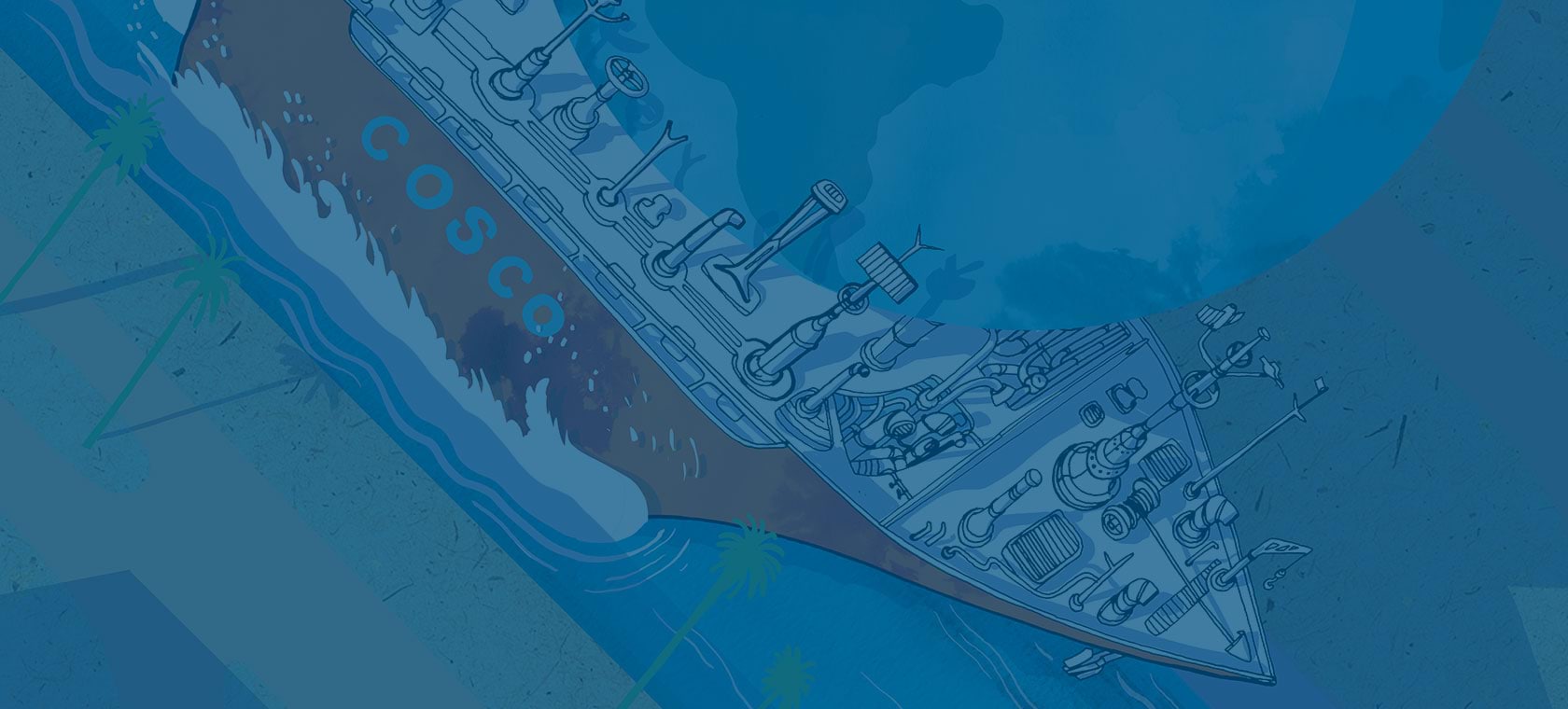
It’s easy to hide in a container ship that’s 300 metres long and nearly 50 wide. The hard part is getting on. But that’s my secret. I can tell you, though, that I did it in the Marshalls, a group of islands in the Pacific between Oceania and the Americas. I didn’t just hop on any passing freighter.
No, indeed. As planned, I boarded the Cosco Shipping Panama, a vessel flying the flag of the People’s Republic of China and bound, as its name suggests, for Panama. It was all about a bet with Pedro to see who’d get to sail on the first ship through the Canal’s new sea lane and locks. The voyage took a few weeks. I’d taken some stores and books, mostly engineering volumes, to keep me company below deck. I’m a student, and major hydraulic construction works intrigue me the most.
I’d been following the new Panama Canal extension closely ever since starting university. This project was really gripping. Even before it became operational, it would be the most ambitious of its kind the world has ever seen and its import is of such magnitude as to change global trade as we know it. The numbers speak for themselves: seven years of work, a thirty-thousand-man construction crew, a $5 billion investment budget. The bet with Pedro went back several months before my stowing away.
I started by contacting Mapei, the Italian company that won the contract to supply the builders with the admixtures for concrete and the synthetic membranes for waterproofing the auxiliary lock chambers. I exchanged various emails with the R&D office and technical-specs staff. I wanted to know what they were doing and how they were handling the challenges that cropped up day after day. They were always very courteous and helpful, replying to all my queries.
Pedro was the best contact. He’s a Mapei engineer who works in Panama. The bet started when I wrote that I wanted to be on the first ship that sailed through the new lane when it opened. Pedro wrote back saying it was impossible. Not for me. Want to bet? It took Pedro a couple of days to answer. But when he did, I quickly hatched my plans. The morning the ship started approaching the Canal’s new lane I climbed up to the foredeck.
The crew members were so busy getting everything ready they never noticed me. I went over to the railing and waited. The hour of victory was at hand. The ship and I were the first to cross the new Canal lane at 7:48 am on 26th June 2016. Pedro was standing on the dock. Months before, he’d sent me a Mapei brochure to wave as the signal.
When he saw me, he was as incredulous as he was exuberant. He’d lost the bet but gained a co-worker. The stakes were a 6-month internship at Mapei prior to attaining my degree. My dream had come true. The sound of the ship’s horn lasted no longer than 2 minutes as it sailed through. The sweet taste of victory is still with me.
* When the first shipment arrived in 1993, Puerto Rico became the first of Mapei’s export partners in Central America for its tile-installation products. Even today Adesilex P22 is the best seller in the countries of the Caribbean. The increasing pace of development of the building and infrastructure trades throughout the area have since has made it necessary to open a new plant and distribution hub in Panama. The expertise gained over the years on major construction jobs all over the world helped Mapei supply a formidable range and volume of products for the new Panama Canal Lane and other big projects elsewhere. The Canal job required a reliable local base for materials manufacture and the on-site technical services the team of experts it sent from the home office provided day and night during the years of construction. Panama proved to be a watershed for Mapei. It enabled the company to con-solidate its business in Central as well as in North America to the point where it is now the industry leader in adhesives for floorings, coverings, special mortars and coatings.
